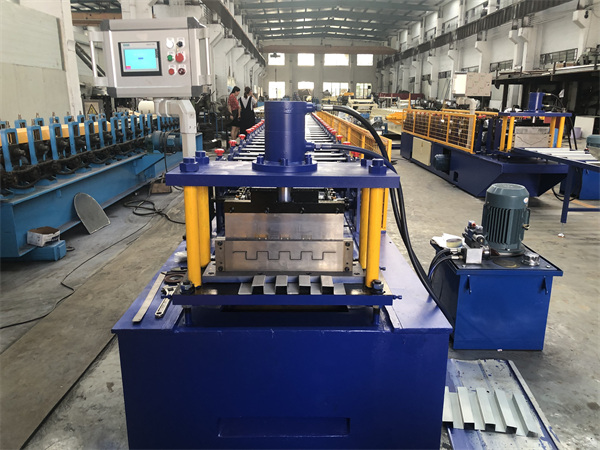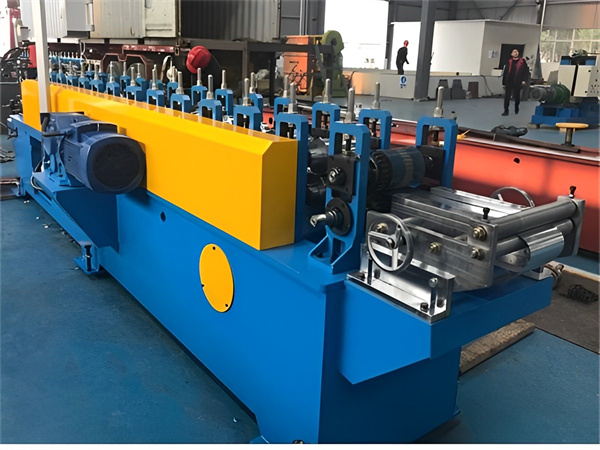Giriş
Metal çatı kaplama, dayanıklılığı, enerji verimliliği ve estetik çekiciliği nedeniyle son yıllarda büyük bir popülerlik kazanmıştır. Metal çatı kaplamasının üretimindeki en önemli bileşenlerden biri Metal Çatı Rulo Şekillendirme Makinesi. Bu makale, bu makinelerin inceliklerini, metal çatı kaplamanın faydalarını, kurulum süreçlerini, bakım ipuçlarını ve çok daha fazlasını araştırmaktadır.
Metal Çatı Rulo Şekillendirmeyi Anlamak
Metal çatı rulo şekillendirme, düz metal levhaları çatı kaplama uygulamaları için uygun çeşitli profillere dönüştüren bir üretim sürecidir. İşlem, istenen şekli elde etmek için metalin bir dizi silindirden geçirilmesini içerir. Bu, çatı kaplama malzemesinin mukavemetine ve uzun ömürlülüğüne katkıda bulunan tutarlı profillerin oluşturulmasını sağlar.
Metal Çatı Kaplamasının Faydaları
Metal çatı kaplaması çok sayıda avantaj sunarak onu hem ev sahipleri hem de işletmeler için cazip bir seçenek haline getirir. Yağmur, kar ve güçlü rüzgarlar gibi sert hava koşullarına karşı olağanüstü dayanıklılık sağlar. Ayrıca, metal çatılar yangına dayanıklıdır ve yangın sırasında hasar riskini azaltır.
Rulo Şekillendirme Makinelerinin Rolü
Rulo şekillendirme makineleri metal çatı kaplama endüstrisinde çok önemli bir rol oynar. Tutarlı şekil ve boyutlara sahip çatı kaplama panellerinin seri üretimini sağlarlar. Bu makineler, spesifikasyonlara göre çeşitli profiller ve tasarımlar oluşturmalarına olanak tanıyan silindir setleri ve kesme aletleriyle donatılmıştır.
Metal Çatı Rulo Şekillendirme Makinelerinin Temel Özellikleri
Metal çatı rulo şekillendirme makineleri, verimliliklerine ve etkinliklerine katkıda bulunan birkaç temel özelliğe sahiptir. Bunlar arasında farklı profillere uyum sağlamak için ayarlanabilir silindir setleri, hassas şekillendirme için otomatik kontroller ve doğru panel uzunlukları için hat içi kesme sistemleri bulunur.

Doğru Metal Çatı Rulo Şekillendirme Makinesi Seçimi
Başarılı bir metal çatı kaplama üretimi için uygun rulo şekillendirme makinesinin seçilmesi çok önemlidir. İstenen profiller, malzeme uyumluluğu, üretim hacmi ve bütçe kısıtlamaları gibi faktörlerin tümü bu karar verme sürecinde rol oynar.
Metal Çatı Kaplaması için Kurulum Süreci
Metal çatı kaplamasının montajı dikkatli bir planlama ve uygulama gerektirir. Doğru kurulum, optimum performans ve uzun ömürlülük sağlar. Bu bölüm, metal çatı kaplamasını etkili bir şekilde kurmak için gereken adımlar konusunda size rehberlik edecektir.
Metal Çatıların Bakımı ve Uzun Ömürlülüğü
Metal çatılar uzun ömürlülükleri ve düşük bakım gereksinimleri ile bilinir. Bununla birlikte, kullanım ömürlerini en üst düzeye çıkarmak için bazı rutin bakımlar gereklidir. Düzenli denetimler, temizlik ve küçük sorunların derhal ele alınması metal çatının ömrünü uzatmaya yardımcı olabilir.
Maliyet Değerlendirmeleri ve Tasarruflar
Metal çatı kaplama ve rulo şekillendirme makinelerinin ilk maliyeti diğer malzemelere kıyasla daha yüksek olsa da, uzun vadeli faydaları yatırımdan daha ağır basmaktadır. Metal çatılar enerji verimliliği, daha düşük onarım ve değiştirme maliyetleri ve sigorta primlerinde potansiyel tasarruf sağlar.
Metal Çatı Kaplamasının Çevresel Etkisi
Metal çatı kaplaması çevre dostu bir seçimdir. Genellikle geri dönüştürülmüş malzemelerden yapılır ve ömrünün sonunda tamamen geri dönüştürülebilir. Ayrıca, metal çatılar güneş ışığını yansıtarak ve soğutma ihtiyaçlarını azaltarak enerji tasarrufuna katkıda bulunur.
Metal Çatı Kaplama Teknolojisinde Yenilikler
Teknolojideki gelişmeler metal çatı kaplama sektöründe yenilikçi değişikliklere yol açmıştır. Dayanıklılığı artıran kaplamalardan ev otomasyonuyla entegre olan akıllı çatı kaplama sistemlerine kadar, bu yenilikler metal çatı kaplama hakkındaki düşüncelerimizi değiştirdi.
Popüler Profiller ve Tasarımlar
Metal çatı kaplaması, ev sahiplerinin estetiklerini tamamlayan stilleri seçmelerine olanak tanıyan çeşitli profil ve tasarımlarda gelir. Geleneksel kenet profillerinden modern mimari tasarımlara kadar her tercihe uygun bir metal çatı kaplama seçeneği vardır.
Başarılı Metal Çatı Kaplaması için Uzman İpuçları
Başarılı bir metal çatı kaplama projesi için bu uzman ipuçlarını dikkate alın. Çatı yüzeyini düzgün bir şekilde hazırlayın, yüksek kaliteli bağlantı elemanları kullanın ve kurulum için üretici yönergelerini izleyin. Düzenli denetimler ve bakım, sorunları erkenden yakalamanıza ve ele almanıza yardımcı olacaktır.

Sonuç
Metal çatı rulo şekillendirme makineleri, metal çatı kaplama endüstrisinin kalbinde yer alır ve dayanıklı, çekici ve verimli çatı kaplama çözümlerinin üretilmesini sağlar. Teknoloji ilerlemeye devam ettikçe, metal çatı kaplama sistemlerinin performansını ve sürdürülebilirliğini artıran daha da fazla yenilik bekleyebiliriz.
SSS
Q1: Metal çatılar yağmur fırtınaları sırasında gürültülü mü? A1: Hayır, uygun yalıtım ve alt kaplama ile metal çatılar diğer çatı kaplama malzemelerinden önemli ölçüde daha gürültülü değildir.
Q2: Mevcut kiremitlerimin üzerine metal bir çatı kurabilir miyim? A2: Çoğu durumda evet. Ancak, uygun hazırlık ve bir çatı kaplama uzmanına danışılması şarttır.
Q3: Metal çatılar yıldırım çarpmasına yatkın mıdır? A3: Hayır, metal çatılar yıldırımları çekmez. Yanıcı değildirler ve enerjiyi güvenli bir şekilde dağıtabilirler.
Q4: Metal bir çatı tipik olarak ne kadar dayanır? A4: Uygun bakımla metal bir çatı, malzemeye ve koşullara bağlı olarak 40-70 yıl veya daha uzun süre dayanabilir.
Q5: Metal çatıya zarar vermeden üzerinde yürüyebilir miyim? A5: Evet, ancak dikkatli olunması gerekir. Metal bir çatı üzerinde yürürken yüzeyin ezilmemesi veya çizilmemesi için dikkatli olunmalıdır.
